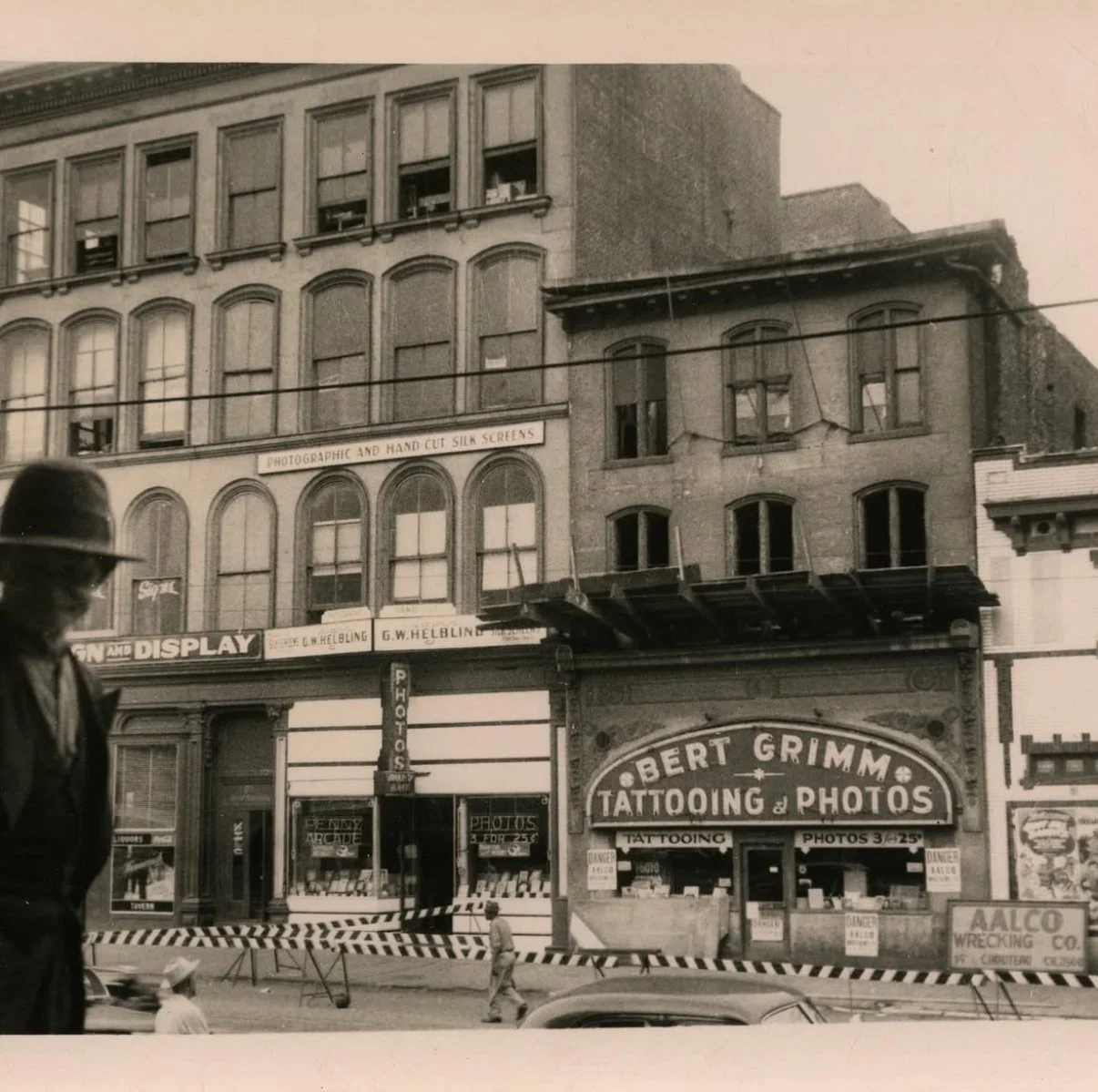Bert Grimm and His St. Louis Legacy
Before the Pike, before California, there was Missouri.
When people talk about Bert Grimm, they usually picture the legendary Pike in Long Beach, California—a shop that became one of the most recognized names in tattooing history. But long before that, Grimm was working in the heart of the Midwest. His early years in St. Louis, Missouri weren’t just a starting point—they were foundational to the development of American traditional tattooing as we know it.
St. Louis in the 1920s: The Right Place, The Right Time
In the 1920s, St. Louis was a city in motion. As a major stop along the Mississippi River, it served as a central hub for freight, military travel, and labor. Soldiers, dockworkers, riverboat crews, and everyday working-class men passed through constantly. That constant flow gave Bert Grimm what every tattooer needs to improve—volume and variety.
It was in a small shop downtown where Grimm began to refine what would later become his signature: clean lines, bold imagery, and repeatable flash that could be tattooed quickly and efficiently. These early years gave him the technical foundation and experience that would carry him through decades of tattooing across the country.
A Regional Tattoo Hub Emerges
While cities like New York and San Francisco often take the spotlight in tattoo history, St. Louis held its own as a regional tattoo hub in the early 20th century. Tattooers passed through or stayed to work. Clients came looking for permanent souvenirs of a place or a time. Grimm’s shop became a destination—not in the way we think of tourist spots today, but as a reliable, well-known stop in a growing web of tattoo culture.
Through his work and presence, Grimm helped shape the Midwest tattoo scene. He wasn’t just tattooing; he was contributing to an informal network of artists trading designs, ideas, and respect.
Building a Visual Language
One of Grimm’s biggest contributions was his early flash. These weren’t just reference sheets—they were functional blueprints for a growing trade. The panthers, daggers, eagles, and pin-up girls we associate with traditional American tattooing weren’t all his creations, but his versions became iconic. Many of those designs, redrawn and reinterpreted, still hang in shops today.
This era also gave Grimm the space to develop a style that balanced clarity and power—something every traditional tattoo strives for. It’s easy to forget that before standardized machines and supplies, everything was built, tuned, or adapted by hand. The style was born out of necessity—and St. Louis gave Grimm the testing ground to make it last.
The Legacy Still Holds
Bert Grimm is often remembered for the flash, the West Coast shop, and his longevity in the craft. But the early chapters in Missouri are just as important. They represent the roots—where repetition became mastery, where the clientele shaped the pace, and where the foundation was poured for everything that came after.
His St. Louis years are a reminder that tattoo history isn’t just made in the places that get the most attention. Sometimes it’s made in the quiet repetition of everyday work, with machines buzzing behind small downtown windows.
Dead Idols honors those who marked the world before us—one bold line at a time.
#BertGrimm #TattooHistory #StLouisTattoo #AmericanTraditional #TattooFlash #TattooArchive #DeadIdols #ForThoseWhoLeftTheirMark
